Comprehensive Assessment Approach for the Design of Automatic Control Systems in Gas Field Stations
Abstract
1. Introduction
1.1. Motivation
1.2. Literature Review
1.3. Contributions
- (1)
- This paper proposes a comprehensive evaluation system for self-control that integrates semi-quantitative and quantitative methods to accurately assess self-control effectiveness.
- (2)
- This paper constructs a targeted automatic control system indicator and scientifically quantifies evaluation standards.
- (3)
- This paper improves the design economy and adaptability of the reliability and availability, combined with the differentiated characteristics of the station.
- (4)
- This paper validates the effectiveness of the comprehensive evaluation method, providing a new approach for the automation transformation of gas fields and ensuring the safe and stable operation of the system.
1.4. Paper Organization
2. Evaluation Method and Index Determination
2.1. Overview of Evaluation Methods
2.2. Evaluation Methods Selection
2.3. Automatic Control System Index Primary
2.4. Determination of Automatic Control System Indicators
3. Semi-Quantitative Calculation
3.1. Index Weight Calculation
3.2. Index Weighting and Grade Judgment
4. Quantitative Calculation of Automatic Control System
4.1. Sub-System Division
4.2. System Reliability Calculation
4.3. System Availability Calculation
5. Differentiation Analysis
5.1. Differential Tabulation by Semi-Quantitative Method
5.1.1. Process Difference and Weight Setting
5.1.2. Composition Difference and Weight Setting of Automatic Control System
5.2. Quantitative Calculation of Differentiation Parameters
5.2.1. The Number of Failures
5.2.2. MTTR
5.2.3. Impact Factor
5.3. Differentiated Scene Setting
5.3.1. Scene Setting
5.3.2. Parameter Setting
5.4. Differentiated Result Analysis
5.4.1. BPCS Type Impact Analysis
5.4.2. SIS and GDS Impact Analysis
5.4.3. The Influence of SIS at Different Levels
6. Conclusions
- (1)
- A multi-dimensional integrated evaluation methodology framework was constructed. Addressing the inflexibility of traditional standardized evaluations and the limitations of single-method approaches, semi-quantitative and quantitative methods were organically combined. At the semi-quantitative level, an index system covering management and technical categories was established. Using AHP, the index weights for different station types were scientifically quantified, achieving differentiated and targeted evaluation standards. At the quantitative level, based on reliability and availability theories, the automatic control system was decomposed into six basic units (e.g., sensors, controllers). Key parameters were calculated through series-parallel models, forming a quantifiable performance evaluation basis.
- (2)
- Evaluation in differentiated scenarios was achieved. Customized evaluation and design were implemented for seven gas station types (conventional gas, shale gas, tight gas, and gas transmission/distribution), accounting for their distinct process characteristics. At the semi-quantitative level, dedicated checklists were constructed based on unique process flows, with weights dynamically adjusted. At the quantitative level, through differentiated parameter settings, the influence of BPCS type, SIS grade, and GDS configuration on system availability was quantified, providing a basis for optimizing automatic control systems across different stations.
- (3)
- The practical value and application prospects of the method were verified. This comprehensive evaluation method overcomes the subjectivity limitations of qualitative evaluation and compensates for the neglect of management elements and process differences inherent in purely quantitative methods, achieving collaborative optimization of safety, reliability, and economic goals.
7. Future Perspectives
Supplementary Materials
Author Contributions
Funding
Data Availability Statement
Conflicts of Interest
Abbreviations
| AHP | Analytical hierarchy process |
| COC | Connection cable |
| COM | Communication module |
| ENS | Engineer station |
| HLA | High-low alarm |
| HHLA | High-high low-low alarm |
| MTTR | Mean time to repair |
| OPS | Operator station |
| PRC | Process controller |
| SEN | Sensor |
| UPS | Uninterruptible power system |
References
- Nord, J.H.; Koohang, A.; Paliszkiewicz, J. The internet of things: Reviewandtheoretical framework. Expert Syst. Appl. 2019, 133, 97–108. [Google Scholar] [CrossRef]
- Yang, X.; Bello, O.; Yang, L.; Bale, D.; Failla, R. Intelligent oilfield-cloud based Big Data service in upstream oil and gas. In Proceedings of the International Petroleum Technology Conference (IPTC), Beijing, China, 26–28 March 2019. [Google Scholar] [CrossRef]
- Duan, W.; Chen, G. Innovation and application of an automatic control system for gas wells production in sulige gas field. J. Phys. Conf. Ser. 2018, 1074, 012123. Available online: https://iopscience.iop.org/article/10.1088/1742-6596/1074/1/012123 (accessed on 28 July 2025). [CrossRef]
- Liu, W.; Hui, L.; Lu, Y.; Tang, J. Developing an evaluation method for SCADA-Controlled urban gas infrastructure hierarchical design using multi-level fuzzy comprehensive evaluation. Int. J. Crit. Infrastruct. Prot. 2020, 30, 100375. [Google Scholar] [CrossRef]
- Bist, N.; Panchal, S.; Gupta, R.; Soni, A.; Sircar, A. Digital transformation and trends for tapping connectivity in the oil and gas sector. Hybrid Adv. 2024, 6, 100256. [Google Scholar] [CrossRef]
- Ahmed, F.; Kilic, K. Fuzzy Analytic Hierarchy Process: A performance analysis of various algorithms. Fuzzy Sets Syst. 2019, 362, 110–128. [Google Scholar] [CrossRef]
- Liu, C.; Zhou, C.; Wang, H.; Liu, S.; Cui, J.; Zhao, W.; Liu, S.; Tan, L.; Xiao, W.; Chen, Y. Reliability analysis of subsea pipeline system based on fuzzy polymorphic bayesian network. Sci. Rep. 2025, 15, 11523. [Google Scholar] [CrossRef]
- Chang, Y.; Wu, X.; Zhang, C.; Chen, G.; Liu, X.; Li, J.; Cai, B.; Xu, L. Dynamic Bayesian networks based approach for risk analysis of subsea wellhead fatigue failure during service life. Reliab. Eng. Syst. Saf. 2019, 188, 454–462. [Google Scholar] [CrossRef]
- Kuo, Y.; Yang, T.; Huang, G.W. The use of grey relational analysis in solving multiple attribute decision-making problems. Comput. Ind. Eng. 2008, 55, 80–93. [Google Scholar] [CrossRef]
- Lu, N.; Liu, S.; Du, J.; Fang, Z.; Dong, W.; Tao, L.; Yang, Y. Grey relational analysis model with cross-sequences and its application in evaluating air quality index. Expert Syst. Appl. 2023, 233, 120910. [Google Scholar] [CrossRef]
- Liu, Y.; Du, J.; Wang, Y. An improved grey group decision-making approach. Appl. Soft Comput. 2019, 76, 78–88. [Google Scholar] [CrossRef]
- Darko, A.; Chan, A.P.C.; Ameyaw, E.E.; Owusu, E.K.; Pärn, E.; Edwards, D.J. Review of application of analytic hierarchy process (AHP) in construction. Int. J. Constr. Manag. 2019, 19, 436–452. [Google Scholar] [CrossRef]
- Podvezko, V. Application of AHP technique. J. Bus. Econ. Manag. 2009, 10, 181–189. [Google Scholar] [CrossRef]
- Al-Sabaeei, A.M.; Alhussian, H.; Abdulkadir, S.J.; Jagadeesh, A. Prediction of oil and gas pipeline failures through machine learning approaches: A systematic review. Energy Rep. 2023, 10, 1313–1338. [Google Scholar] [CrossRef]
- Halbouni, A.; Gunawan, T.S.; Habaebi, M.H.; Halbouni, M.; Kartiwi, M.; Ahmad, R. Machine learning and deep learning approaches for cybersecurity: A review. IEEE Access 2022, 10, 19572–19585. [Google Scholar] [CrossRef]
- Luo, J.; Li, H.; Huang, G.; Wang, S. A multi-dimensional performance assessment framework for microgrids concerning renewable penetration, reliability, and economics. J. Build. Eng. 2023, 63, 105508. [Google Scholar] [CrossRef]
- He, Y.; Zhao, G.; Tang, Y.; Song, J.; Chen, Y. Available target evaluation of underground gas storage based on AHP-FCE methods. Geoenergy Sci. Eng. 2024, 242, 213255. [Google Scholar] [CrossRef]
- Dai, H.; Wang, J.; Li, G.; Chen, W.; Qiu, B.; Yan, J. A multi-criteria comprehensive evaluation method for distributed energy system. Energy Procedia 2019, 158, 3748–3753. [Google Scholar] [CrossRef]
- Wu, J.; Zhang, S.; Li, J.; Liu, J.; Sun, H.; Jia, Z.; Xia, Y.; Liu, J.; Pan, D.; Sun, J.; et al. Comprehensive Evaluation of Sustainable Treatment Technology of Oily Sludge Based on AHP-FCE. Clean Energy Sustain. 2023, 1, 10007. [Google Scholar] [CrossRef]
- Zhang, X.; Shen, Q.; Zhao, D.; Zhang, Z.; He, R.; Song, H. Risk assessment on chemical plants by the method of safety checklist analysis. Process Saf. Prog. 2017, 36, 95–101. [Google Scholar] [CrossRef]
- Hu, H.; Zhu, B.; Guo, J. Natural gas pipeline leakage analysis based on Advance risk analysis and Analytic hierarchy process. IOP Conf. Ser. Earth Environ. Sci. 2020, 565, 012019. Available online: https://iopscience.iop.org/article/10.1088/1755-1315/565/1/012019 (accessed on 28 July 2025). [CrossRef]
- Ferdous, R.; Khan, F.; Sadiq, R.; Amyotte, P.; Veitch, B. Handling data uncertainties in event tree analysis. Process Saf. Environ. Prot. 2009, 87, 283–292. [Google Scholar] [CrossRef]
- Purba, J.H.; Tjahyani, D.T.S.; Widodo, S.; Ekariansyah, A.S. Fuzzy probability based event tree analysis for calculating core damage frequency in nuclear power plant probabilistic safety assessment. Prog. Nucl. Energy 2020, 125, 103376. [Google Scholar] [CrossRef]
- Han, T.; Gao, Z.; Du, W.; Hu, S. Multi-dimensional evaluation method for new power system. Energy Rep. 2022, 8, 618–635. [Google Scholar] [CrossRef]
- Zeng, P.; Li, J.; Lin, D.; Zhao, L.; Cheng, S.; Liu, Z. Evaluation Indicator System of Natural Gas Pressure Power Generation System and Its Application. In Proceedings of the 37th Annual Conference on Power System and Automation in Chinese Universities, Hangzhou, China, 23–25 October 2022; Springer Nature: Singapore, 2022; pp. 208–218. [Google Scholar] [CrossRef]
- Kabenla, R.; Ampofo, S.; Owusu, G.; Atulley, J.A.; Ampadu, B. Application of Analytical Hierarchy Process (AHP) and Multi-Criteria Evaluation (MCE) for a case study and scenario assessment of flood risk in the White Volta Basin of the Upper East Region, Ghana. Discov. Water 2024, 4, 90. [Google Scholar] [CrossRef]
- Liu, Z.W.; Xie, Q.Y.; Dai, L.; Wang, H.; Deng, L.; Wang, C.; Zhang, Y.; Zhou, X.; Yang, C.; Xiang, C.; et al. Research on comprehensive evaluation method of distribution network based on AHP-entropy weighting method. Front. Energy Res. 2022, 10, 975462. [Google Scholar] [CrossRef]
- Borghesan, F.; Zagorowska, M.; Mercangöz, M. Unmanned and autonomous systems: Future of automation in process and energy industries. IFAC-PapersOnLine 2022, 55, 875–882. [Google Scholar] [CrossRef]
- Addabbo, T.; Fort, A.; Mugnaini, M.; Vignoli, V.; Simoni, E.; Mancini, M. Availability and reliability modeling of multicore controlled UPS for datacenter applications. Reliab. Eng. Syst. Saf. 2016, 149, 56–62. [Google Scholar] [CrossRef]
- Kanoun, K.; Kaâniche, M.; Laprie, J.P. Qualitative and quantitative reliability assessment. IEEE Softw. 1997, 14, 77–87. [Google Scholar] [CrossRef]
- Varnavskiy, K.; Nepsha, F.; Chen, Q.; Ermakov, A.; Zhironkin, S. Reliability assessment of the configuration of dynamic uninterruptible power sources: A case of data centers. Energies 2023, 16, 1419. [Google Scholar] [CrossRef]
- Rahmat, M.K.; Karim, A.Z.A.; Salleh, M.N.M. Sensitivity analysis of the AC uninterruptible power supply (UPS) reliability. In Proceedings of the 2017 International Conference on Engineering Technology and Technopreneurship (ICE2T), Kuala Lumpur, Malaysia, 18–20 September 2017; IEEE: New York, NY, USA, 2017; pp. 1–6. [Google Scholar] [CrossRef]
- Jiang, Z.; Zhao, T.; Wang, S.; Ren, F. A novel risk assessment and analysis method for correlation in a complex system based on multi-dimensional theory. Appl. Sci. 2020, 10, 3007. [Google Scholar] [CrossRef]
- Zhao, Q.Q.; Chung, I. Availability Analysis and Redundancy Allocation Optimization for Multi-level Systems with Alternative Units. In Reliability Analysis and Maintenance Optimization of Complex Systems: Essays in Honor of Professor Won Young Yun on His 65th Birthday; Springer Nature: Cham, Switzerland, 2025; pp. 259–286. [Google Scholar] [CrossRef]
- Aji, J.O.; Uchendu, I. Improving Facility Operations: A Quantitative Evaluation of MTBF, MTTR, and SLA Targets. European J. Innov. Stud. Sustain. 2025, 1, 247–261. [Google Scholar] [CrossRef]
- Zhang, T.; Horigome, M. Availability and reliability of system with dependent components and time-varying failure and repair rates. IEEE Trans. Reliab. 2001, 50, 151–158. [Google Scholar] [CrossRef]
- Gaver, D.P. Time to failure and availability of paralleled systems with repair. IEEE Trans. Reliab. 2009, 12, 30–38. [Google Scholar] [CrossRef]
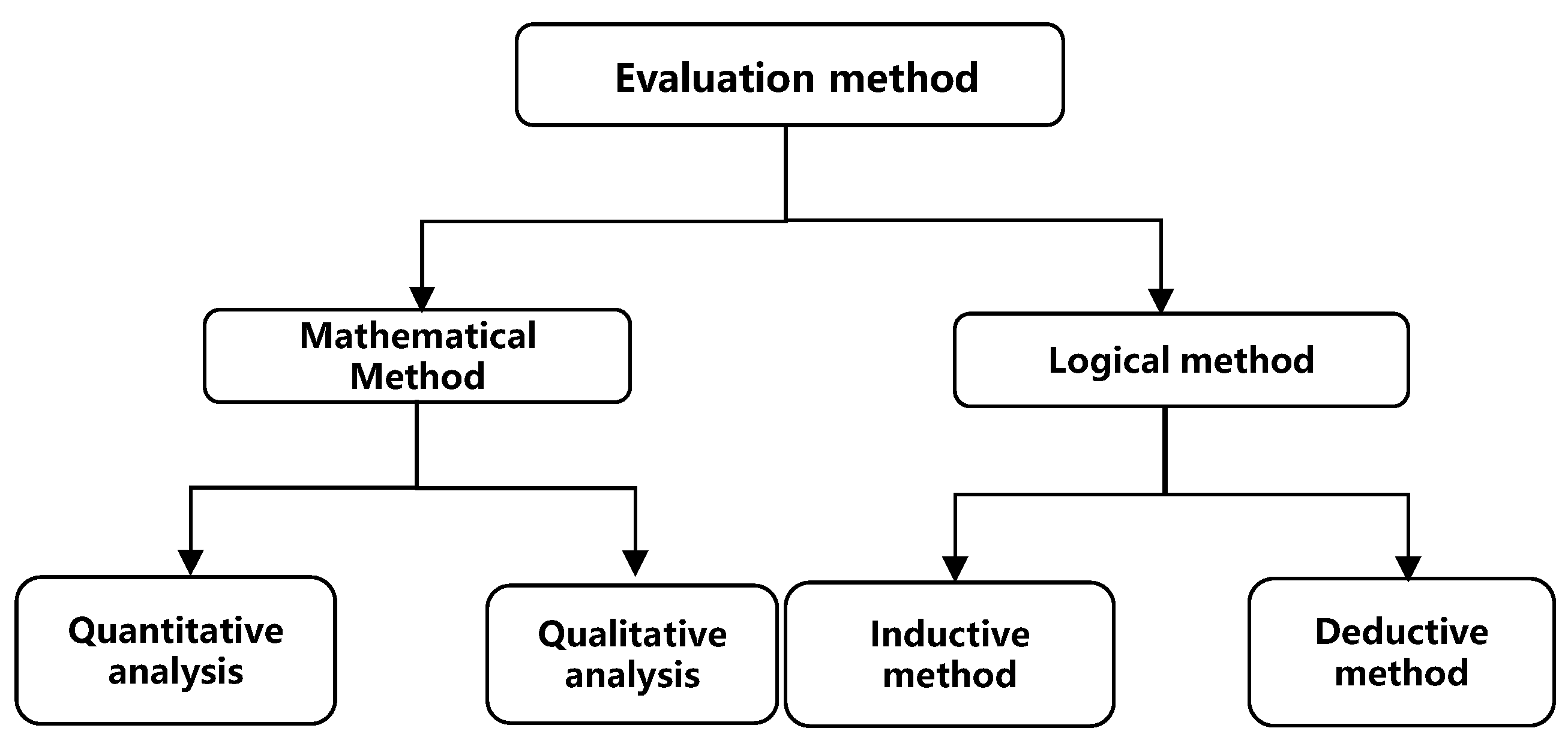
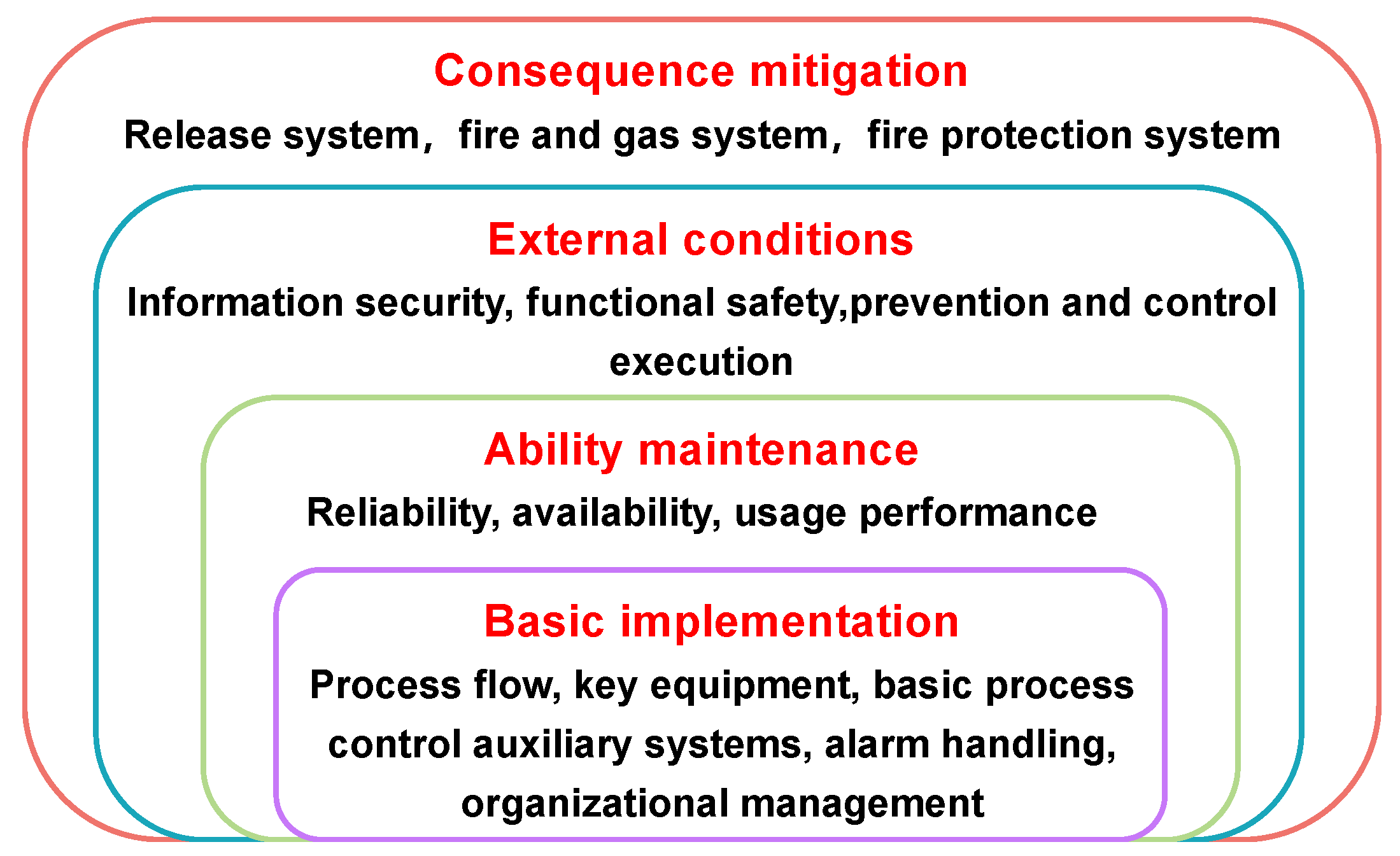
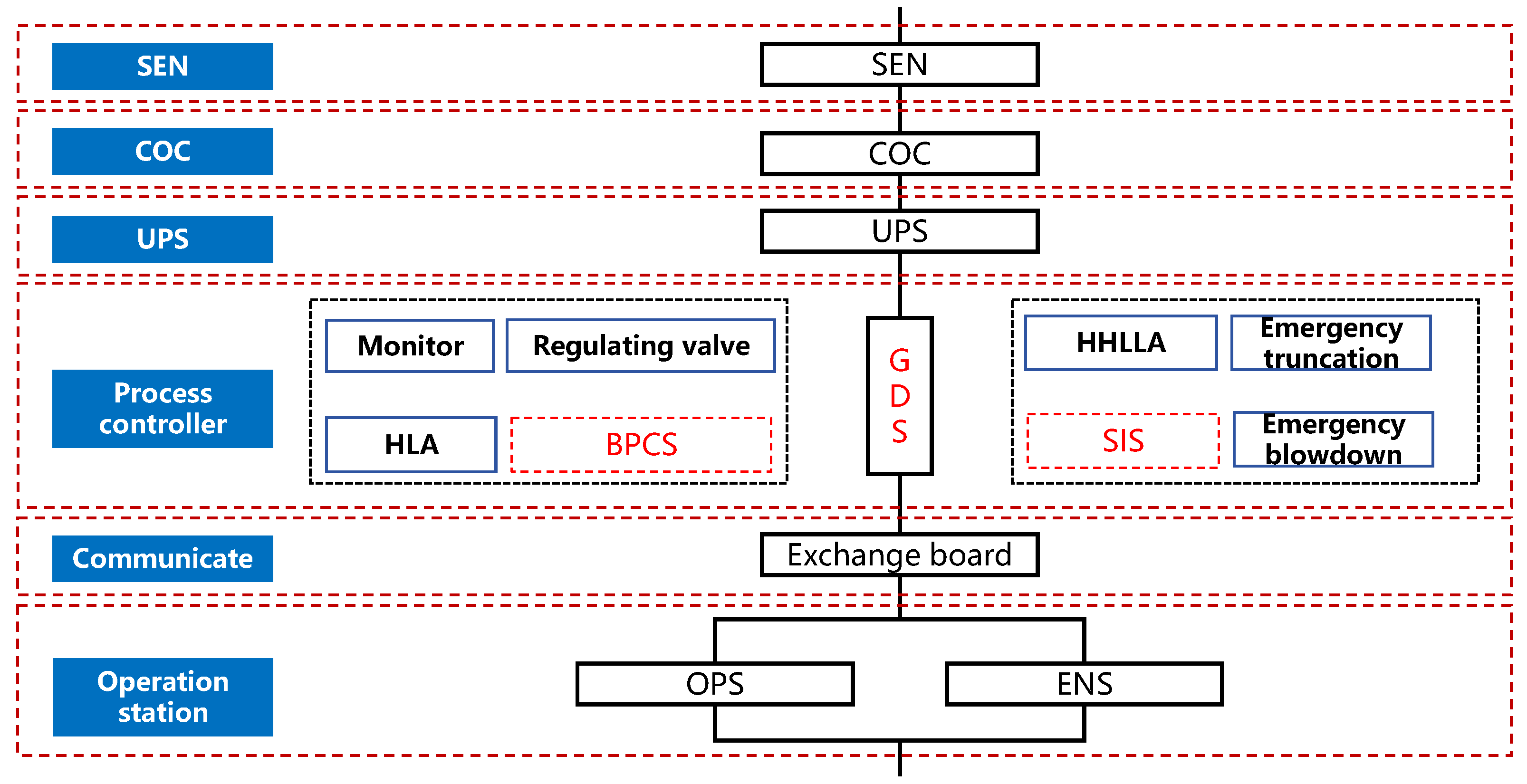
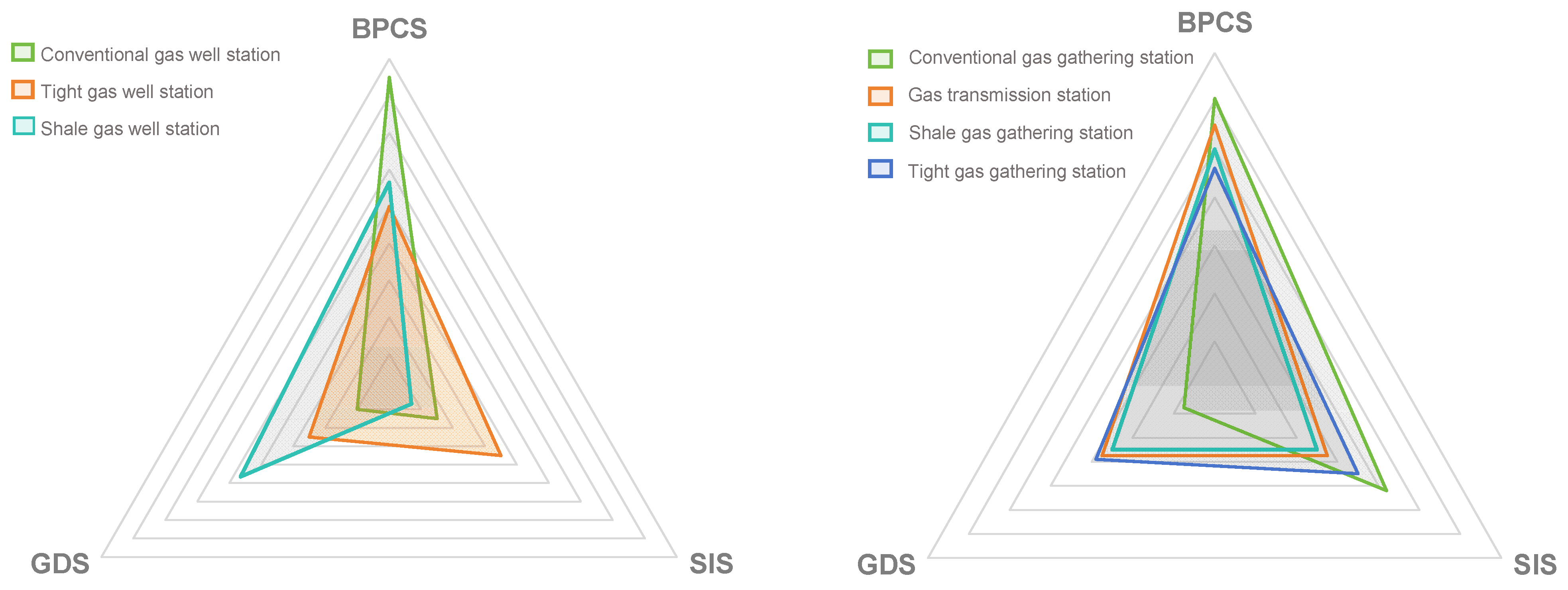
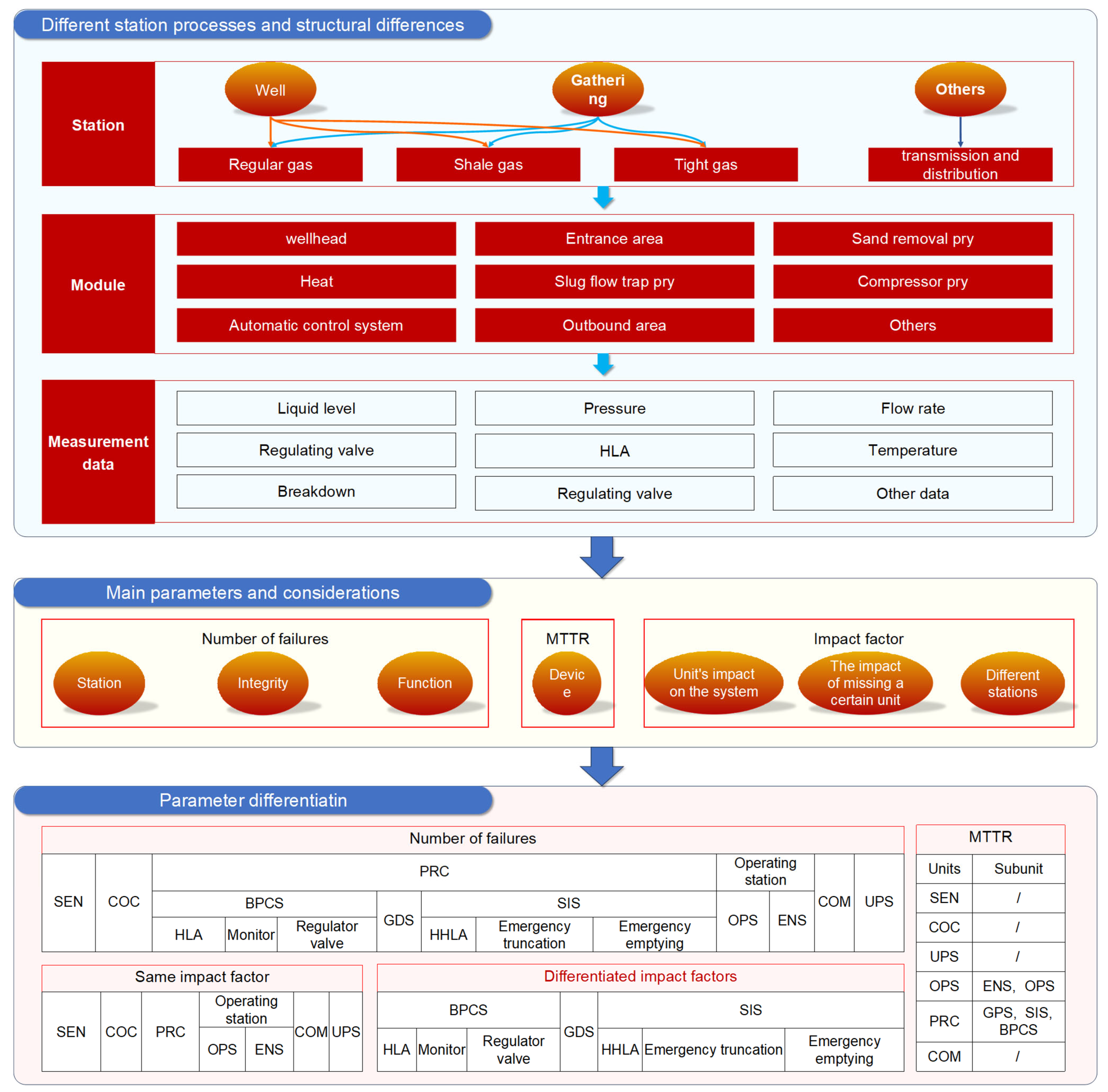
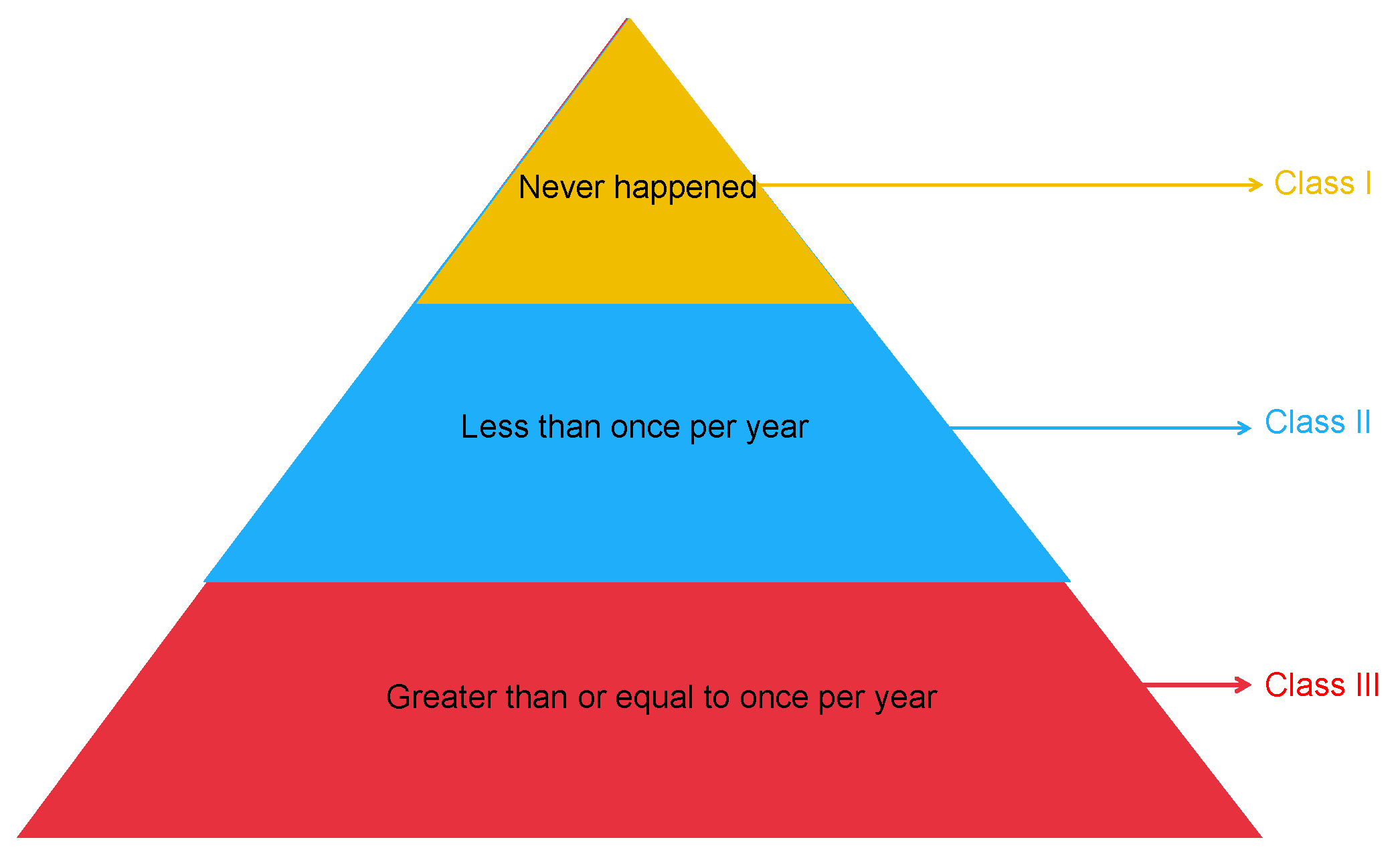
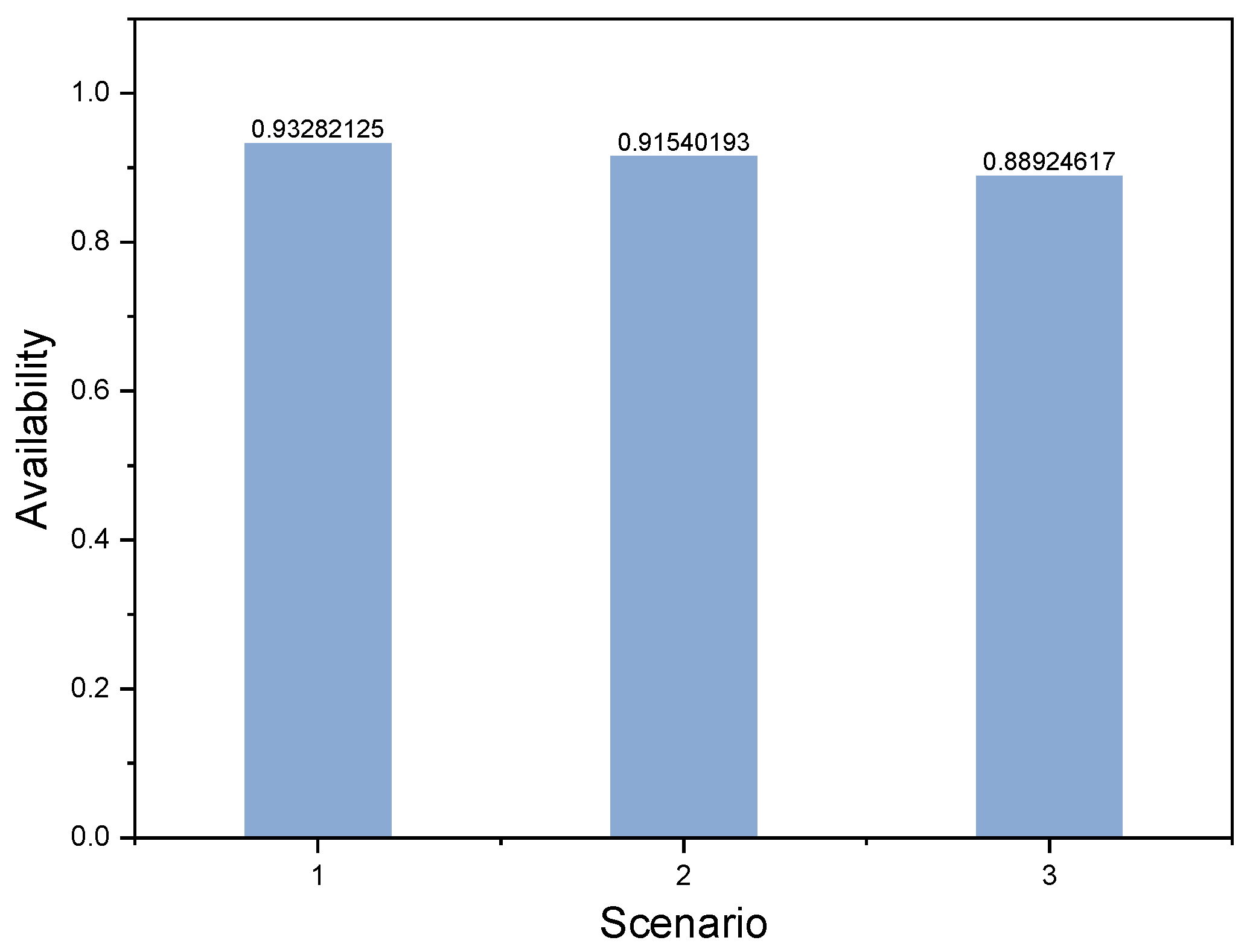
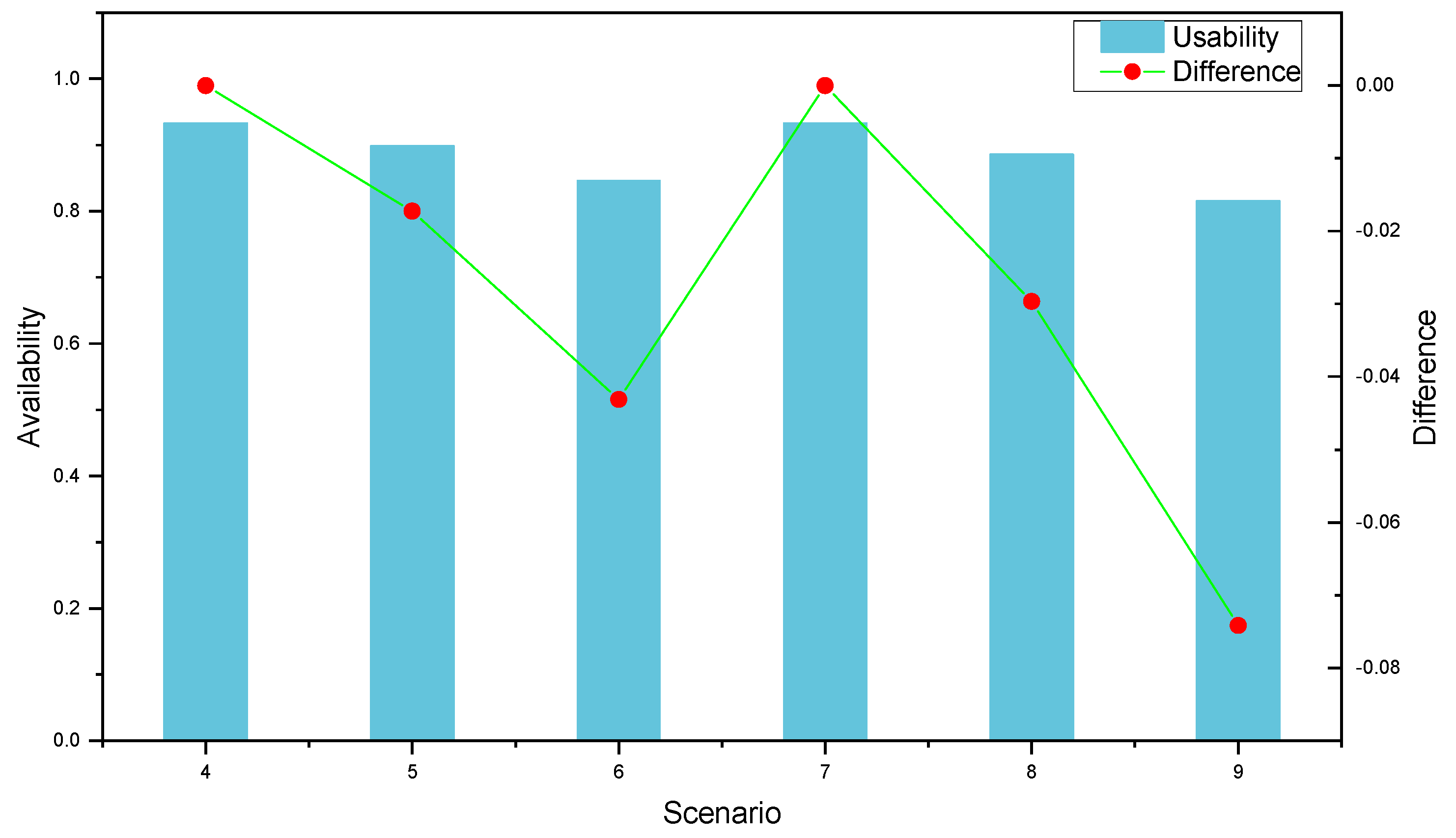
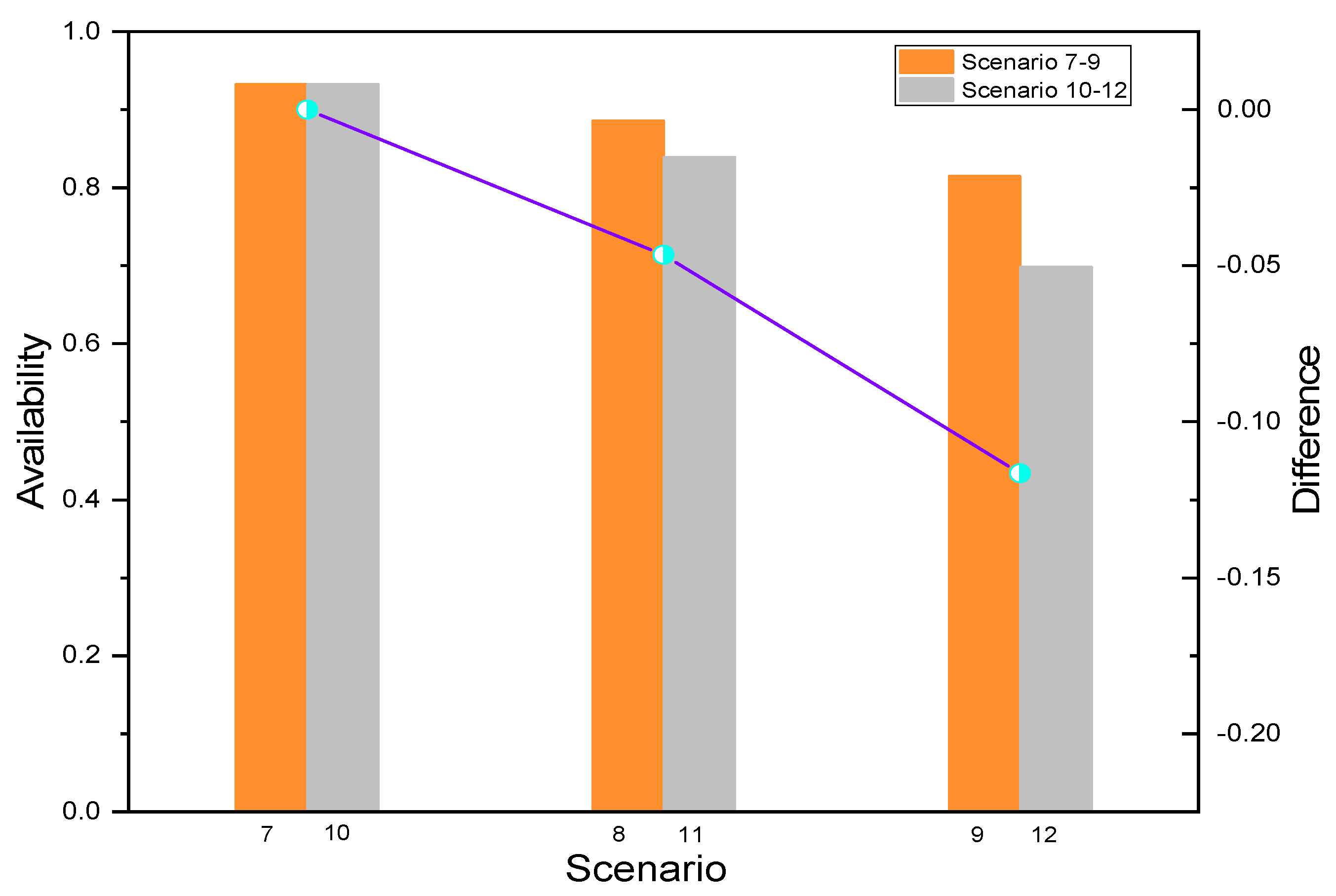
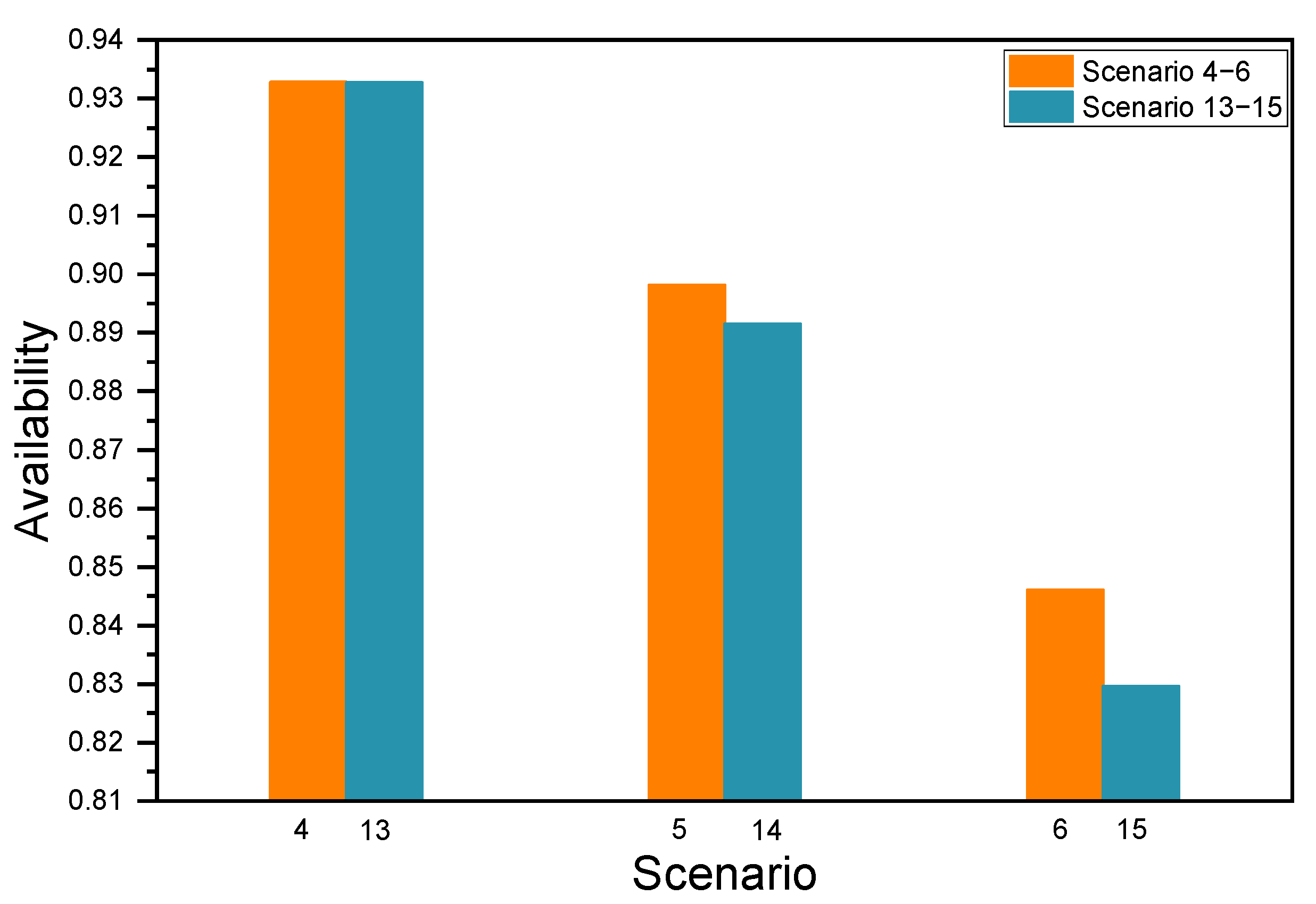
| Method | This Paper | FAHP | Bayesian Networks | Failure Mode and Effect Analysis | Event Tree Analysis | Neural Networks |
|---|---|---|---|---|---|---|
| Method type | Hybrid | Hybrid | Quantitative | Qualitative | Qualitative/Quantitative | Quantitative |
| Data requirements | Real data + expert experience | Real data + expert experience | A large amount of real data | Historical fault records + expert experience | Logical derivation/probability of event occurrence | A large amount of real data |
| Applicability to different station types | Adapts to differentiated demands | Adjustable hierarchy, lacks differentiation | Poor for small samples | Component-level, not system-wide | Specific accidents, not system-wide | Requires similar site data |
| Estimated reliability level | Specific system reliability values | Ratings, no reliability values | The failure probability can be output | Identifies failure modes, no system reliability | No quantitative reliability | Predicts with sufficient data |
| Estimated availability level | Specific availability values | Ratings, no availability values | The probability of unavailability can be output | Identifies failure modes, no system availability | No quantitative availability | Predicts with sufficient data |
| Interpretability of results | Clear hierarchy, transparent formulas | Clear hierarchy | Complex probability updates | Intuitive steps | Linear event chain | Hard to interpret |
| Flexibility | Core framework general, needs customization | Redesign fuzzy matrix across industries | Restructure probability models | Adjust fault mode library | Adjust fault mode library | Needs target industry data |
| Evaluation Methods | Degree | Strengths | Cons |
|---|---|---|---|
| Safety Checklist | Qualitative | Simple | It is difficult and workload to compile the checklist |
| Pre-hazard analysis | Qualitative | Simple | The accuracy is affected by the subjective factors of the analysis and evaluation personnel. |
| Failure mode and impact analysis | Qualitative | Exhaustive | More complex, the degree of accuracy is affected by the subjective reasons of the analysis and evaluation personnel. |
| Event Tree | Qualitative/Quantitative | Simple | Quantitative is affected by the data, and the accuracy is affected by the subjective factors of the analysis and evaluation personnel. |
| Incident Tree | Qualitative/Quantitative | Simple | Complex, heavy workload, accurate, accident tree compilation is wrong, distortion, and quantitative affected by data |
| Fire and explosion evaluation of Dow Chemical Company | Quantitative | Concise | Can only make a macro evaluation of the system as a whole |
| Monday fire and explosion toxicity index analysis | Quantitative Analysis | Concise | It can only make a macro evaluation of the system as a whole |
| Operational risk assessment | Qualitative | Simple | The degree of accuracy is affected by the subjective factors of the analyst. |
| Risk and maneuverability research | Qualitative | Simple | The degree of accuracy is affected by the subjective factors of the analysis and evaluation personnel. |
| BowTie method | Qualitative | Intuitive, the process is easy to understand | The degree of accuracy is affected by the subjective factors of the analysis and evaluation personnel. |
| Block Diagram Method | Quantification | Intuitive and simple | Works with simple systems and relies on accurate data |
| Causal analysis | Qualitative | Image-specific | The drawing process is tedious and time-consuming, and the quality of the graphics is limited by the level of experience of the analyst. |
| Protective layer analysis | Semi-quantitative | Suitable for dangerous events where the accident scenario is more complex | The quantitative is affected by the data, and the accuracy is affected by the subjective factors of the analysis and evaluation personnel |
| Checklist Rating | Risk Rating | Explanation |
|---|---|---|
| ≥90% | I, II | I means no need for improvement or upgrades II means it does not require improvement or upgrade for the time being |
| 80–90% | II, III | II means it does not need improvement or upgrading for the time being III means a small area of improvement or upgrade is required |
| 60–80% | III, IV | III means small local improvements or upgrades are required IV means extensive improvements or upgrades are required |
| <60% | IV, V | IV means extensive improvements or upgrades are required V means a complete system replacement is required |
| Stations | Craft Flow |
|---|---|
| Regular gas well station | 1. Station module. 2. Corrosion inhibitor module. 3. Integrated process skid device. 4. Pig transceiver device skid. 5. Blow-off module. 6. Outbound module. |
| Regular gas gathering station | 1. Inbound module. 2. Corrosion inhibitor module. 3. Gas field water transfer module. 4. Separation metering module. 5. Outbound module 6. Emptying module. |
| Gas transmission station | 1. Outbound module. 2. Voltage regulation and measurement module. 3. Pigging module. 4. Filter separation module. 5. Emptying module. 6. Blowdown module. |
| Shale gas well station | 1. Wellhead module. 2. Sand removal skid. 3. Separate metering pry. 4. Pigging out valve group skid. 5. Rotation metering valve group prying. 6. Emptying module. |
| Shale gas gathering station | 1. Wellhead module. 2. High-pressure sand removal skid. 3. Vertical separation metering skid. 4. Horizontal separation metering pry. 5. Pigging outlet valve group pry. 6. Platform series inlet valve group pry. |
| Tight gas well station | 1. Wellhead module. 2. Heating module. 3. Metering module. 4. Sand removal module. 5. Emptying module. 6. Pigging outbound module. |
| Tight gas gathering station | 1. Pigging inlet valve group module. 2. Inlet valve group module. 3. Pigging ball barrel pry. 4. Slug flow catcher pry. 5. Three-phase separation pry. 6. VOC compressor skid, 7. Blow-off module. 8. Outbound valve module. 9. Condensate tank area and loading facilities. 10. Fuel air skid. 11. Pig barrel pry. |
| Stations | SEN | COC | PRC | Operating Station | COM | UPS | |||||||
|---|---|---|---|---|---|---|---|---|---|---|---|---|---|
| BPCS | GDS | SIS | OPS | ENS | |||||||||
| HLA | Monitor | Regulator Valve | HHLA | Emergency Truncation | Emergency Emptying | ||||||||
| Tight gas gathering station | 30 | 15 | 1 | 0.3 | 0 | 0.6 | 0.3 | 0.3 | 0 | 3 | 3 | 3 | 6 |
| Tight gas well station | 15 | 6 | 0.3 | 0.2 | 0 | 0.6 | 0 | 0 | 0 | 3 | 3 | 3 | 6 |
| Shale gas gathering station | 30 | 15 | 0.3 | 0.2 | 0 | 0.6 | 0 | 0.3 | 0 | 3 | 3 | 3 | 6 |
| Shale gas well Station | 21 | 11 | 1.5 | 0.6 | 0 | 0.6 | 0 | 0.3 | 0 | 3 | 3 | 3 | 6 |
| Regular gas gathering station | 18 | 9 | 0 | 0.3 | 1.2 | 0 | 0.3 | 0.3 | 0.3 | 3 | 3 | 3 | 6 |
| Regular gas well station | 12 | 5 | 0.3 | 0.2 | 0.6 | 0 | 0 | 0 | 0 | 3 | 3 | 3 | 6 |
| Gas transmission and distribution station | 30 | 15 | 0.3 | 0.2 | 0 | 0.6 | 0 | 0.3 | 0.3 | 3 | 3 | 3 | 6 |
| Units | Subunits | MTTR |
|---|---|---|
| SEN | / | 8 h |
| COC | / | 8 h |
| UPS | / | 24 h |
| OPS | ENS, OPS | 8 h |
| PRC | GPS, SIS, BPCS | 8 h |
| COM | / | 24 h |
| Stations | BPCS | GDS | SIS | ||||
|---|---|---|---|---|---|---|---|
| HLA | Monitor | Regulator Valve | HHLA | Emergency Truncation | Emergency Emptying | ||
| Regular gas well station | 1 | 0.1 | 0.2 | ||||
| 0.9 | 1 | 0.8 | 0.8 | 1 | 1 | ||
| Regular gas gathering station | 1 | 0.1 | 0.7 | ||||
| 0.2 | 1 | 0.8 | 0.6 | 1 | 1 | ||
| Shale gas well station | 0.8 | 0.5 | 0.4 | ||||
| 0.9 | 1 | 0.1 | 0.1 | 1 | 0.1 | ||
| Shale gas gathering station | 0.8 | 0.5 | 0.4 | ||||
| 0.9 | 1 | 0.1 | 0.1 | 1 | 0.1 | ||
| Tight gas well station | 0.9 | 0.8 | 0.1 | ||||
| 0.9 | 1 | 0.2 | 0.8 | 1 | 0.2 | ||
| Tight gas gathering station | 0.8 | 0.5 | 0.6 | ||||
| 0.9 | 1 | 0.1 | 0.8 | 1 | 0.2 | ||
| Gas transmission and distribution stations | 0.9 | 1 | 0.5 | ||||
| 0.9 | 1 | 0.2 | 0.2 | 1 | 1 | ||
| Name | SEN | COC | PRC | Operating Station | COM | UPS | |
|---|---|---|---|---|---|---|---|
| OPS | ENS | ||||||
| Impact factor | 1 | 0.7 | 1 | 0.2 | 0.5 | 1 | |
| 0.8 | 0.7 | ||||||
| Influencing Factors | Scenario | PLC/RTU | PLC | RTU | GDS | SIS |
|---|---|---|---|---|---|---|
| Composition of an automatic control system | Scenario 1 | √ | √ | Level II | ||
| Scenario 2 | √ | √ | Level II | |||
| Scenario 3 | √ | √ | Level II | |||
| Scenario 4 | √ | Level II | ||||
| Scenario 5 | √ | Level II | ||||
| Scenario 6 | √ | Level II | ||||
| Scenario 7 | √ | √ | ||||
| Scenario 8 | √ | √ | ||||
| Scenario 9 | √ | √ | ||||
| Scenario 10 | √ | |||||
| Scenario 11 | √ | |||||
| Scenario 12 | √ | |||||
| SIS rating | Scenario 13 | √ | Level I | |||
| Scenario 14 | √ | Level I | ||||
| Scenario 15 | √ | Level I | ||||
| “√” indicates that the self-control system has this configuration in different scenarios. Spaces indicate that the automatic control system does not have this configuration in different scenarios | ||||||
| BPCS Types | BPCS (Class I) | BPCS (Class II) | BPCS (Class III) | ||||||
|---|---|---|---|---|---|---|---|---|---|
| Feature | HLA | Monitor | Regulator valve | HLA | Monitor | Regulator valve | HLA | Monitor | Regulator valve |
| 10 years of failures | 1.5 | 0.6 | 2.1 | 1 | 0.3 | 1.2 | 0.3 | 0.2 | 0.6 |
| SIS Grades | SIS (Level I) | SIS (Level II) | SIS (Level III) | SIS (Level IV) | ||||||||
|---|---|---|---|---|---|---|---|---|---|---|---|---|
| Feature | HHLA | Emergency truncation | Emergency emptying | HHLA | Emergency truncation | Emergency emptying | HHLA | Emergency truncation | Emergency emptying | HHLA | Emergency truncation | Emergency emptying |
| 10 years of failures | 0.6 | 0.4 | 0.4 | 0.3 | 0.3 | 0.3 | 0.3 | 0.2 | 0.2 | 0.2 | 0.1 | 0.1 |
Disclaimer/Publisher’s Note: The statements, opinions and data contained in all publications are solely those of the individual author(s) and contributor(s) and not of MDPI and/or the editor(s). MDPI and/or the editor(s) disclaim responsibility for any injury to people or property resulting from any ideas, methods, instructions or products referred to in the content. |
© 2025 by the authors. Published by MDPI on behalf of the International Institute of Knowledge Innovation and Invention. Licensee MDPI, Basel, Switzerland. This article is an open access article distributed under the terms and conditions of the Creative Commons Attribution (CC BY) license (https://creativecommons.org/licenses/by/4.0/).
Share and Cite
Dai, Z.; Zhou, J.; Zhang, W.; Zhong, J.; Wang, F.; Xu, L.; Xia, T.; Feng, Q.; Wang, M.; Chen, X. Comprehensive Assessment Approach for the Design of Automatic Control Systems in Gas Field Stations. Appl. Syst. Innov. 2025, 8, 113. https://doi.org/10.3390/asi8040113
Dai Z, Zhou J, Zhang W, Zhong J, Wang F, Xu L, Xia T, Feng Q, Wang M, Chen X. Comprehensive Assessment Approach for the Design of Automatic Control Systems in Gas Field Stations. Applied System Innovation. 2025; 8(4):113. https://doi.org/10.3390/asi8040113
Chicago/Turabian StyleDai, Zhixiang, Jun Zhou, Wei Zhang, Jinrui Zhong, Feng Wang, Li Xu, Taiwu Xia, Qinghua Feng, Minhao Wang, and Xi Chen. 2025. "Comprehensive Assessment Approach for the Design of Automatic Control Systems in Gas Field Stations" Applied System Innovation 8, no. 4: 113. https://doi.org/10.3390/asi8040113
APA StyleDai, Z., Zhou, J., Zhang, W., Zhong, J., Wang, F., Xu, L., Xia, T., Feng, Q., Wang, M., & Chen, X. (2025). Comprehensive Assessment Approach for the Design of Automatic Control Systems in Gas Field Stations. Applied System Innovation, 8(4), 113. https://doi.org/10.3390/asi8040113





